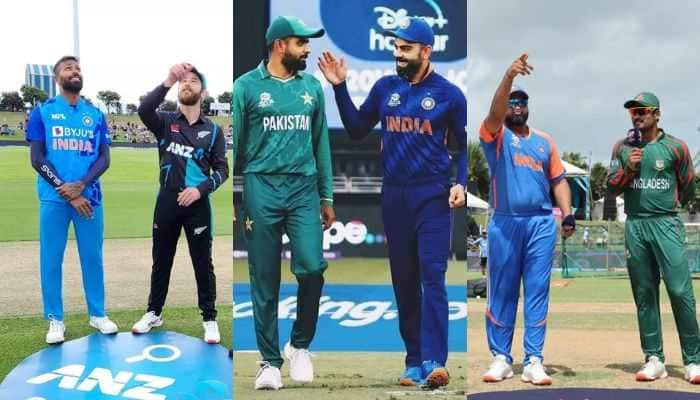India Art Fair 2017: Glimpses of few works of art, installation that are worth your time
India Art Fair 2017: Glimpses of few works of art, installation that are worth your time
Early Bengal School Paintings
)
Early Bengal School Paintings: Paintings of ‘Anonymous’ artists from the early Bengal School displayed in DAG booth are awe inspiring. One can see the close kinship between what came to be known as ‘calendar art’ later and these startlingly original images. Even today they strike you with their ability to remain contemporary despite their rootedness in tradition.
M.F Husain’s Work from Experimental 60s

M.F Husain’s Work from Experimental 60s: Aicon Art Gallery has showcased an uncharacteristic Husain from his ‘experimental 60s’ period. One wouldn’t recognise it as the Master’s work without a very close inspection. It is as beautiful as several other works of his on display, including serigraphs at the Archer Art Gallery.
Vernacular in Flux

Vernacular in Flux: A newly created space at the fair, ‘Vernacular In Flux’ is a specially curated gallery by Dr Annapurna Garimella focussing on the indigenous techniques of painting and storytelling through Gond, Madhubani and Mysore paintings. The gallery seeks to represent India’s native art traditions amidst contemporary artistic expressions.
Priti Puri’s Between Jade and Jude

Priti Puri’s Between Jade and Jude: Artist Priti Puri’s set of 24 drawings, titled ‘Between Jude and Javed’, based on the 1978 film ‘Junoon (The Obsession)’ re-imagines the film in black and white. The work appears at once interesting and immediate; works as much as an installation as a series of sketches.
Word and Book as Literal Material and Visual Metaphor

Word and Book as Literal Material and Visual Metaphor: While several artists have included ‘the text’ in their works, arts of Tassos Pavlopoulos, Atul Dodiya, Nalini Malini and Anju Dodiya prominently stand out. Works of Greek artist Tassos Pavlopoulos frequently carry sardonic images and tongue-in-cheek text.
Priti Kahar’s You Are Human
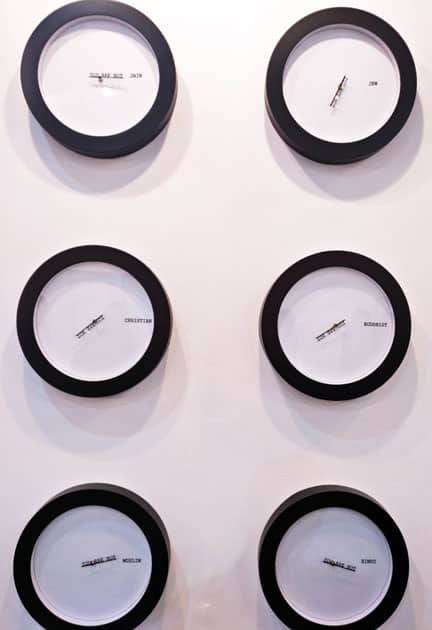
Priti Kahar’s You Are Human: Six clocks bearing names of all religions and the words ‘You Are Not’ on the hour-hand ticking away – Kahar’s installation works as a continual reminder to the onlooker on the values of brotherhood and peace.
Reena Saini Kallat’s Woven Chronicle
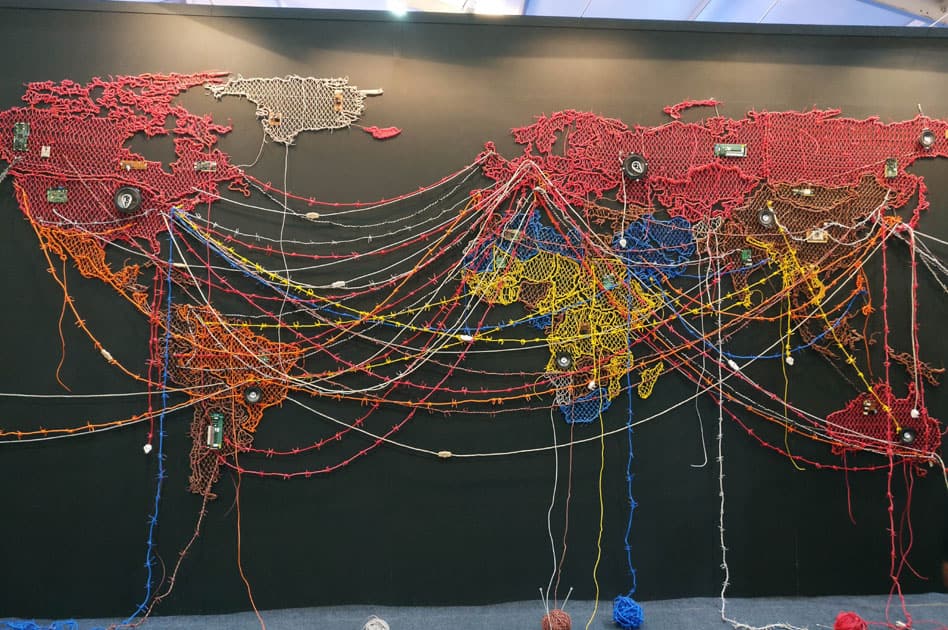
Reena Saini Kallat’s Woven Chronicle: Mumbai-based artist Reena Saini Kallat’s ‘Woven Chronicle’ is an interesting interpretation of the times we live in. A connected, open planet is depicted using electric wires as yarn but it is ironically replete with contradictions in the form of “stringent immigration laws, closed borders and prejudices individuals face when seeking to transgress geographic boundaries”.
SChia’s BMW Art Car
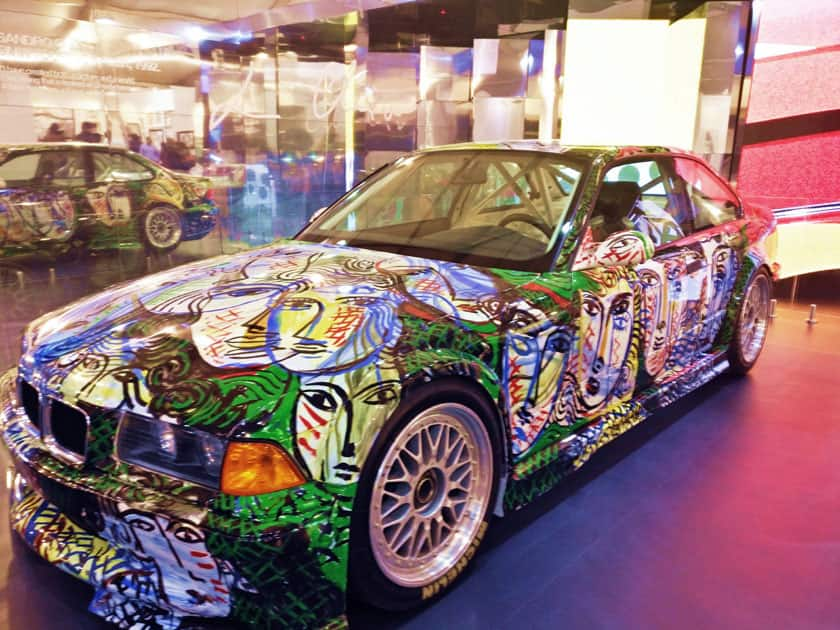
SChia’s BMW Art Car: On display, near the VIP Lounge, is BMW’s 13th Art Car, the BMW M3 GTR paiandro nted in 1992 by Italy's most renowned contemporary artist Sandro Chia. It showcases a unique, tasteful mix of art, technology and design. The body of the car is painted with amazed faces that portray the audiences. “This car here meets the people who look at it like a mirror. It is an interchange of beauty”, Chia said about his work at one time.
India Today’s Mitron

India Today’s Mitron: The booth titled ‘Mitron’ written in Hindi by India Today is equally sardonic, humorous in parts and should not be missed. Works here are a mix of some of the biggest names in politics, culture, entertainment and digital trends that have found place on the cover page of the magazine over the years.
Lukas Feichtner Galerie

Lukas Feichtner Galerie (Vienna): Among the international booths, large paintings of artists Hannes Mlenek, Xenia Hausner are worth your time at the Lukas Feichtner Galerie (Vienna). Booths of Grey Noise (Dubai); 1×1 Gallery (Dubai); Britto Arts Trust and Nepal Arts Council also demand a patient dekko.
F.N. Souza’s Man and Woman Laughing

F.N. Souza’s Man and Woman Laughing: At DAG Modern, on display is F.N Souza’s landmark work (sold for over Rs 16 crore in 2015) ‘Man and Woman Laughing’ from 1957 – the late fifties being a very intense and uninhibited phase of Souza’s artistic career.
Sudarshan Shetty’s Taj Mahal
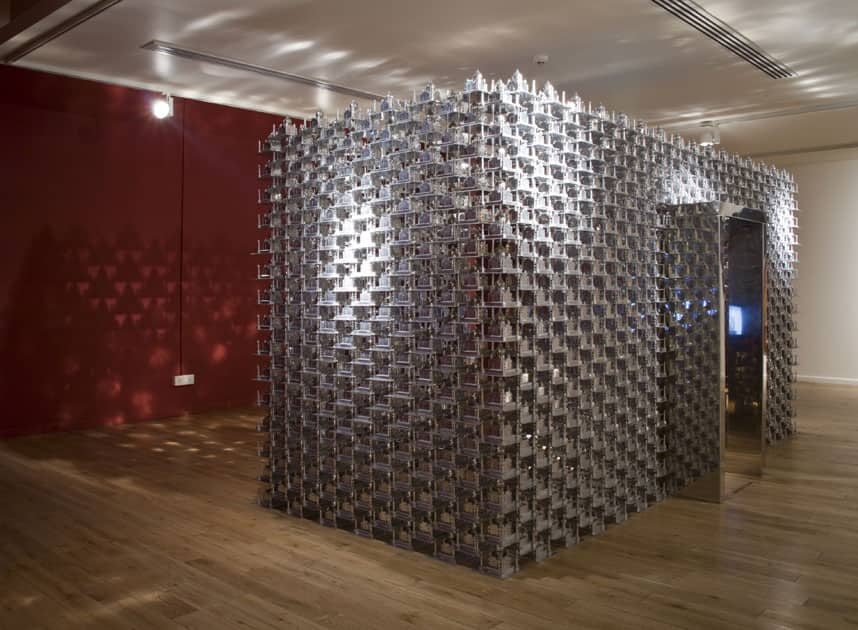
Sudarshan Shetty’s Taj Mahal: The installation comprises of more than “250 miniature metallic reproductions of the monument, within which there is a video sequence showing the central dome of the actual building, a mausoleum for love, consumed by flames.” This imaginative and spell-binding installation piece re-fashions the iconic monument, one of the seven wonders of the world, to portray its ‘mindless reproduction and commoditisation’.
Sunil Sigdel’s Peace Owners II

Sunil Sigdel’s Peace Owners II: Nepali artist Sunil Sigdel’s irreverent and extremely political painting 'Peace Owners II' is a satirical take on the holy trinity comprising of Donald Trump, Vladimir Putin and Kim Jong Un infused with Buddhist imagery and style.
Mithu Sen’s Phantom Pain

Mithu Sen’s Phantom Pain: This installation, a gripping primeval demonstration made with dental prosthetics, is a public reflection on “defined categories of art-making as well as the distance between the artist and her audience.” The work is shocking and moving at the same time.
Anila Quayyam Agha's All Flowers Are For Me

Anila Quayyam Agha's All Flowers Are For Me: Pakistani-American artist Anila Quayyam Agha's critically acclaimed and award winning sculptural installation 'All the Flowers are for Me' is a moving and beautiful, at the same time a very public tribute that strives to capture “the identity, beauty, and femininity of her late mother and other mothers that become obscured by gravestone and shroud.” The work has a square stainless steel box made of intricate laser cut-outs of floral and geometric designs. The box is lit from inside and hangs in the centre. Its cuts and embroidery reflect and refract light, completely engulfing its surrounding area and the visitors for a surreal visual impact.
K.S Radhakrishnan’s The Ramp
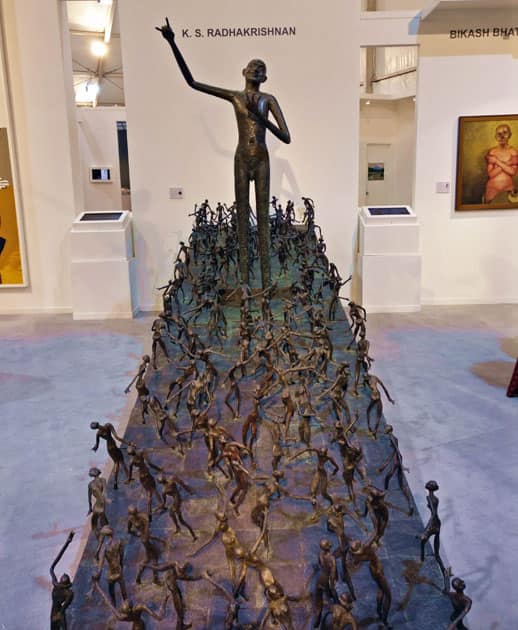
K.S Radhakrishnan’s The Ramp (Standing Musui): If there is one work that stuns you with its power and energy, then it is K.S Radhakrishnan’s bronze installation titled ‘The Ramp (Standing Musui)’ which shows a “central figure making a hand gesture similar to saint Ramakrishna, standing amongst ecstatically dancing smaller figures.” Anyone passing it was stunned to silence. Truly a masterpiece!
Kanu’s Gandhi

Kanu’s Gandhi: Take a peek into Mahatma Gandhi’s life and times through these intimate black & white photographs taken by his nephew and personal staffer Kanu Gandhi between the years 1936 and 1949. Supported by PhotoInk gallery, these rare and candid shots have been restored with a lot of effort. “Gandhi imposed three conditions on Kanu: that he would never use a flash; that he would never ask him to pose; and that the Ashram would not fund his photography” and the extraordinary results are now up on display for all to admire. (Courtesy: PHOTOINK. Mahatma Gandhi and Rabindranath Tagore at Shantiniketan, Bengal, February 1940) — By Garima Dutt
Trending Photos





